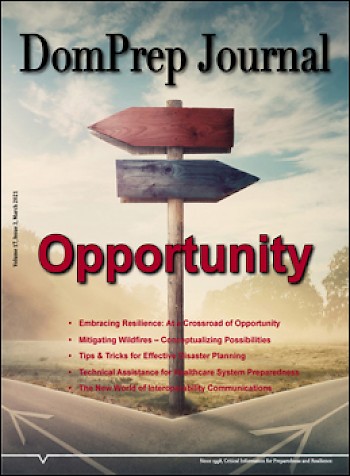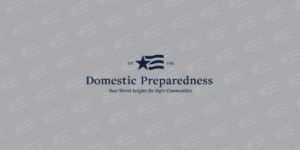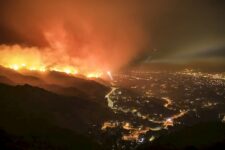

Tips & Tricks for Effective Disaster Planning
Robert J. (Bob) Roller
March 24, 2021
One of the most critical yet least understood core emergency management capabilities is planning,
which reduces the chaos present during a disaster. However, the emergency management community is awash
in various planning systems, various types of plans, and confusing terminology that complicates the
work. This often causes problems when emergency managers are tasked to lead new planning efforts, to
update existing plans, and to adapt them to real-life emergencies. Eleven tips and tricks can help solve
these problems.

The New World of Interoperability Communications
Charles J. Guddemi
March 17, 2021
Four years ago, during the 2017 Inauguration, the country and the world existed in a very different reality than they do today. Today, a “new world” exists within a global pandemic and among First Amendment activities and protests. The 2021 Inauguration was unique for these reasons but also presented challenges in communications that are not so new. Now, more than ever, agencies need to collaborate to ensure continuity of government and security of the homeland as well as the health of the overall emergency communications ecosystem.

Mitigating Wildfires – Conceptualizing Possibilities
Senay Ozbay
March 10, 2021
Mitigating wildfires is not only essential for protecting life, property, and critical infrastructure. It also is essential for controlling changes within the climate, which ultimately causes disasters around the world. National Fire Protection Agency (NFPA) estimates that wildfires now cost between $63 and $285 billion a year. According to data from the Fourth National Climate Assessment, wildfires cause 5-10% of annual global CO2 emissions each year. As long as wildfires continue to intensify and burn more area, CO2 emissions are expected to increase because changes in the climate lead to warmer temperatures and favorable wildfire conditions. Furthermore, an Environmental Protection Agency (EPA) report comprises the cost of health effects from exposure to U.S. wildfires between 2008 and 2017 as $450 billion.

Survey: Pandemic Planning 2021
Domestic Preparedness
March 10, 2021
In 2020-2021, the COVID-19 pandemic has demonstrated that a public health emergency is not solely a
public health problem. A multi-discipline, multi-jurisdictional effort is needed to overcome the
numerous challenges that communities face. It is not good enough to create lessons learned and best
practices if no subsequent actions are taken. DomPrep needs your input on COVID-19 preparedness and
response efforts by taking the Pandemic Planning 2021 survey. There is also a comment field for you to
add any additional comments/suggestions, lessons learned, best practices, etc.

Technical Assistance for Healthcare System Preparedness
Audrey Mazurek and John Hick
March 3, 2021
The mission of the U.S.Department of Health and Human Services (HHS) Office of the Assistant Secretary for Preparedness and Response (ASPR) is to save lives and protect Americans from 21st century health security threats by leading the nation’s medical and public health preparedness for, response to, and recovery from disasters and public health emergencies. To accomplish this mission, ASPR collaborates with hospitals, healthcare coalitions, community stakeholders and groups, state, local, tribal, and territorial governments, the private sector, and other partners across the U.S. to improve readiness and response capabilities.

